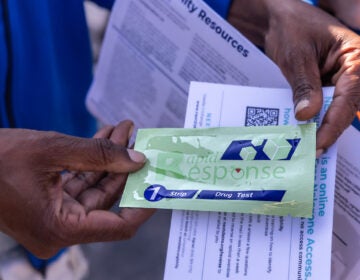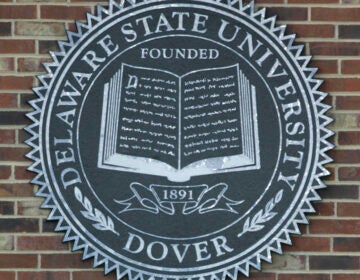Summer camp rising: Wilmington group seeks to elevate community center summer programs [video]
Wilmington’s Summer Collaborative hopes to transform low-cost, community center summer camps.
The list of hot topics in education runs long, and, well, hot.
There’s the debate over standardized tests, the war over charter schools, the tussle over teacher evaluation, the sparring over school turnaround—so on and so on.
Amid this avalanche of antipathy you will find precious little chatter about what happens to children between June and September.
In fact, summer may be the last bit of neutral ground in the ongoing education wars. And that’s partly why Catherine Lindroth is so fascinated by it.
“It’s outside the bounds of school,” she says. “It’s outside the red tape of any politics.”
Lindroth’s official title is director of community impact for Teach for America Delaware, where for the last three years she has spearheaded an initiative called the Summer Collaborative.
The Collaborative–which will soon spin off into a separate non-profit–consists of five community centers across Wilmington. Together, the centers serve roughly 1,000 kids every summer through in-house day camps.
The Summer Collaborative is many things – meeting ground, capacity builder, resource generator, idea lab. But it’s chief mission is singular: to elevate the community center summer camp, and in the process give low-income children a worthwhile summer experience.
“We’re providing them with the same opportunity they would have if they grew up in the ‘burbs,” says Tara Wiggins, director of youth services at the West End Neighborhood House, a member of the collaborative.
This may sound like a small victory, but Lindroth and her colleagues think it can be profound. An even summer playing field, they believe, can unlock a more equitable education system.
“I think it could fundamentally reverse the achievement gap,” Lindroth says.
“If you’re a low-income kid, you’re exposed to nothing”
Her optimism relies primarily on a key piece of research.
In 2007, sociologists from Johns Hopkins University released findings from a multi-decade study of Baltimore school children. The researchers found that high- and low-income children made similar academic gains during the school year. Over the summer, though, their paths diverged. Wealthy children either tread water or made slight gains. Low-income kids, meanwhile, lost ground, particularly when it came to reading.
More important, the researchers discovered that this summer learning gap made a profound long -term difference. They found that two-thirds of the ninth grade achievement gap in reading between rich and poor students could be attributed to “differential summer learning over the elementary years.”
The Johns Hopkins study was far from the first to highlight so called “summer learning loss,” or even to show that poor children lose more academically over the summer than wealthy children. But the Johns Hopkins study suggested that those summer inequities were driving broader educational disparities.
This may sound counter intuitive. After all, wouldn’t one assume that academic differences reflect what happens during the academic year?
But Lindroth and other summer learning advocates see a different paradigm. Even in the worst public schools, they figure, students have fixed, daily schedules. They learn from certified teachers. And they benefit from all the ancillary services schools provide, such as counseling, health care, and daily meals.
In summer, all that structure and support evaporates.
“Summer is this free space,” Lindroth says. “And if you are in this free space as a high-income kid you get to see that the world has so many opportunities for you. If you’re a low-income kid, you’re exposed to nothing.”
Giving camp a makeover
To fix this, Lindroth targeted community center summer camps, which tend to cost little and attract children from low-income families. Three summers ago, she placed a number of Teach for America corps members at Wilmington-area summer camps, hoping their experience in the classroom would benefit the camps. It didn’t. Turns out, airlifting a few counselors into long-established summer camps didn’t really move the needle. The corps members did, however, report back on what they saw as counselors, and what kind of help the camps could actually use.
“Every single community center was struggling with the same problems, the same core issues,” Lindroth says. “They didn’t have the resources, the capacity they really needed to drive a high-quality learning experience where kids can be lit up about learning.”
More than that, the camps needed a mental makeover. Camp leaders and staff saw their community centers as sanctuaries, programs designed to shield kids from whatever trouble lurked beyond the purview of adult supervision.
“Nine years ago, camp was largely about playing and providing a safe environment while parents worked,” says Kristina Woznicki, associate executive director of the Walnut Street YMCA. “In the first five or six years, more notably in the last two or three years, the focus has shifted a little bit to, ‘we need to be doing more’.”
Doing more, in this case, means more learning, and more engagement. The camps now want to see themselves less as safe havens, and more as conduits for academic discovery. The collaborative exists to encourage that transition.
Say hello to your curriculum coordinator
Starting in winter, leaders meet regularly with Teach for America staff to discuss things like “camp vision” and summer curricula. The Collaborative helps camps hire eager college and high school students to serve as counselors. They also supply camps with curriculum coordinators, instructional coordinators, and operations managers—all back-office positions intended to ensure counselors know what they’re supposed to do on a given day and have the resources to do it. There’s even an online platform where camp leaders can pick from a variety of high-quality camp activities collected from all over the country.
As a result, students get thoughtful lessons that present a mix between school-year instruction and summer adventure. On a typical Tuesday morning at the Walnut Street YMCA, one might find a science experiment taking place in one classroom, while students read quietly in another. At the West End Neighborhood House, campers spent one morning learning about forensic science through an activity that involved mysterious fingerprints left on a glass.
Each week, counselors take exit tickets to determine what information students retained. Other staff analyze the data and present it at weekly gatherings.
Big goals, big backers
At times, all this can feel like overkill. Exit tickets? Curriculum coordinators? Is this even summer camp anymore?
To maintain balance, the camps still give students time to play sports and run around outside. (Several students assured me that swimming remains their favorite part of camp)
But the Collaborative’s larger ethos is clear: It’s time to take camp seriously. And some big backers are taking the Collaborative seriously. Barclay’s, Bank of America, M&T Bank, and WSFS have all contributed to the Collaborative, according to the organization. Member camps, in turn, receive between $17,000 and $25,000 anually from the Collaborative’s coffers.
All this, Lindroth believes, is just the beginning. She envisions a world where students at low-cost, community center summer camps can choreograph dance routines or analyze big data or attend film-making classes (all options at one of the nation’s most heralded summer enrichment programs).
“When we get there,” she says, “kids will be able to walk into any center in this city and have a place that will light them up about the possibilities of who they could be.”
WHYY is your source for fact-based, in-depth journalism and information. As a nonprofit organization, we rely on financial support from readers like you. Please give today.





